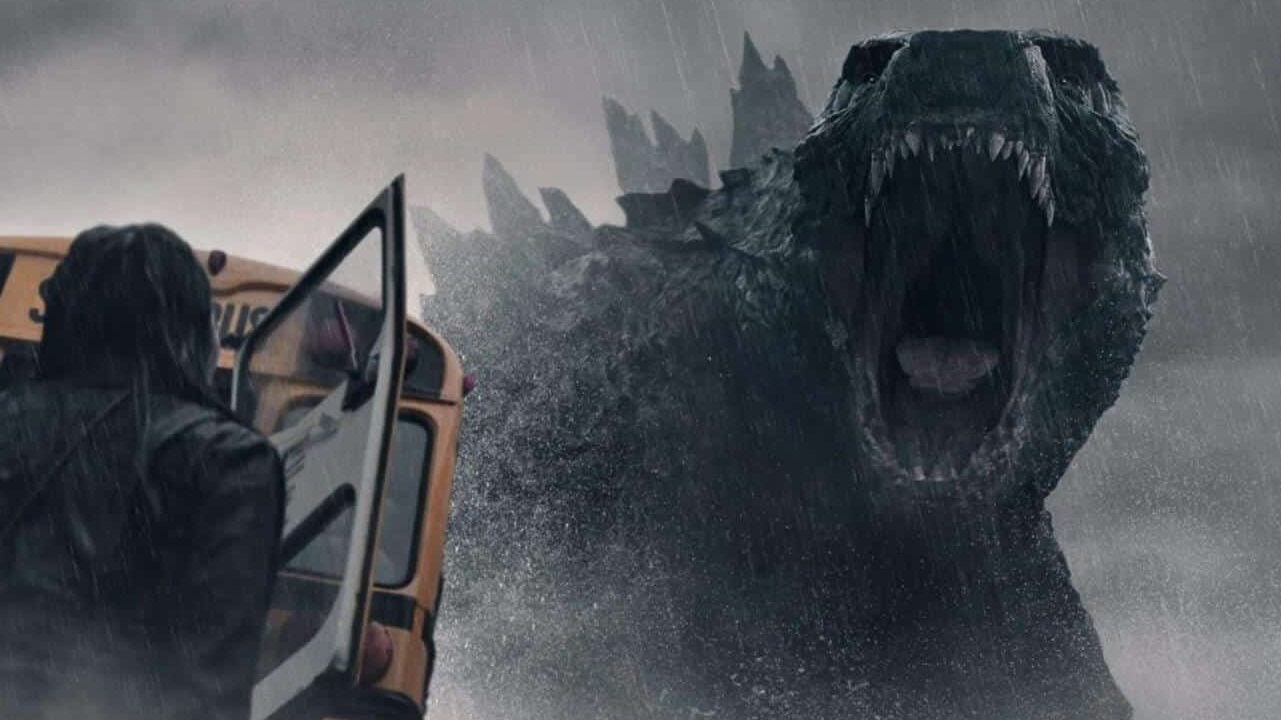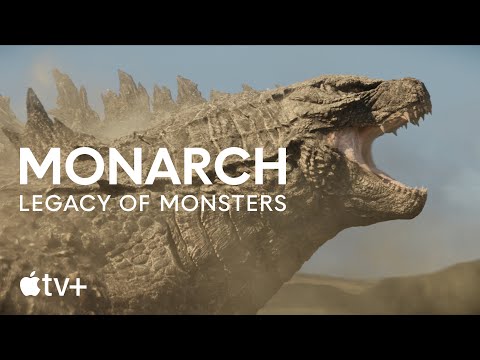Monarch: Legacy of Monsters Review: Apple TV+’s Godzilla Series Chooses Bland Drama Over Kaiju Scares

The opening minutes of Monarch: Legacy of Monsters treat viewers to sight they long to see. No, not Godzilla. They see Bill Randa, the goofy researcher played by John Goodman in the 2017 movie Kong: Skull Island.
Anyone not thrilled by Randa’s return might want to skip Monarch: Legacy of Monsters. Although the promotional material for the new Apple TV+ series does feature Godzilla, the series features more Monarch than Monsters.
Monarch, for those who don’t recall, is the name of the shadowy organization tasked with investigating giant monsters, dubbed Massive Unidentified Terrestrial Organisms or MUTOs. Viewers first met Monarch in 2014’s Godzilla, and the organization has appeared in all the following entries in Warner Brothers’s MonsterVerse franchise, which includes Godzilla, Kong: Skull Island, Godzilla: King of the Monsters (2019), and Godzilla vs. Kong (2021).
Anyone who nodded with impatience while reading that refresher will enjoy Monarch: Legacy of Monsters and the further adventures of Bill Randa. But anyone confused by the name Randa and irritated by the paragraph above should stick to the classic Godzilla movies of the 50s and 60s.
A Legacy of Movies

Monarch: Legacy of Monsters seeks to flesh out the MonsterVerse by connecting the birth of Godzilla in 1954 (the same year that Toho Pictures released the original Gojira in Japan) to the 1973 setting of Kong: Skull Island and the events of Godzilla. It does so with a split timeline, with half following the birth of Monarch in the 1950s and the other half examining Monarch’s response to Godzilla’s attack on San Fransisco in 2014.
The latter timeline focuses on Cate (Anna Sawai), who comes to Japan after finding a mysterious key in her late father’s belongings. The key leads her to a secret family her father hid from her and her mother, including a half-brother Kataro (Ren Watabe) she had no idea existed. Driven by an unclear mix of surprise-sibling rivalry and unconvincing plot drivers, the duo look further into their father’s secret life, with the help of hacker/Kataro’s ex-girlfriend May (Kiersey Clemons), a trail that leads them to former Monarch operative Corporal Lee Shaw (Kurt Russell) and beyond.
Cpl. Shaw also drives the earlier timeline, which follows the founding of Monarch after World War II. Sent by the U.S. Army to aid researcher Kieko (Mari Yamamoto), Shaw (played as a younger man by Kurt’s son Wyatt Russell) meets Bill Randa (Anders Holm), a cryptozoologist searching the jungles for a mythological creature. Of course, the trio finds the creature and becomes the point team for the U.S. military’s response to giant monsters, a program called Monarch.
The two timelines never come together, but Shaw provides a link between the two, revealing the vast distance between what he thought he built with Kieko and Randa and the bureaucratic nightmare that plagues Cate, Kataro, and May. At their best, the timelines invoke a doubling motif, as when characters layer two maps over one another to discover a clue or when the older Shaw stands in front of a projection of the younger Shaw.
More often than not, though, Monarch only uses the two timelines to fill the screen with more: more music, more plot, more dialogue. And very little of it is good.
A Quantity of Misfires

The above plot description grazes the surface of the many plot machinations and familial reversals that unfold over Monarch’s eight episodes. However, it does contain almost all of the information about monsters who show up in the series.
That ratio shouldn’t surprise anyone who has seen a Godzilla movie. Even the original films spent more time with scientists and soldiers than with Mothra or Rodan.
However, those movies worked because the human characters kept viewers entertained and engaged in between kaiju sequences. Monarch fails in this regard, especially in the modern-day timeline. Series creators Chris Black and Matt Fraction do give Cate a Godzilla-related tragic backstory, shown at the start of the first episode. Instead of doing anything interesting with her suffering, the show insists on revealing tragedy upon tragedy in her life, all to lesser effect. Watching a bunch of school kids get stomped by Godzilla should traumatize everyone, but Black and Fraction throw on a distant father, a secret brother, a cheating girlfriend, and more.
Worse, Sawai and Watabe struggle to make their characters anything more than sulky teens. Both actors deliver their lines with a petulant shrug, a snottiness that grows more frustrating when it becomes a pouting rejection of adventure. Clemons, who has done excellent work in films such as Dope and Hearts Beats Loud, fumbles over the dialogue as well, but the elder Russell manages to toss off clumsy one-liners as if working with John Carpenter again.
Despite all of the flaws in the modern timeline, the past timeline shines. Of course, the junior Russell helps here, the perfect embodiment of his dad’s cocky charisma. But the writing seems sharper and more well-observed, less hampered by pop-psychological nonsense. In one small, but well-constructed scene, Shaw’s superior General Puckett (Christopher Heyerdahl) responds to his subordinate’s frustration by asking how many stars he sees on the older man’s uniform.
“I see one, sir,” Shaw answers. “Which means you went through two, three, four levels of bureaucracy to get this much to me,” he continues, raising the number each time Puckett points in the air.
With that sort of sharp dialogue and natural character work, the lack of monsters wouldn’t be so bad. But with MUTOS offering intermittent interruptions to shallow psychological exploration, one wonders if Monarch’s resources wouldn’t be better spent on self-help seminars.
A Scarcity of Monsters

Monarch’s mishandling of the human element will frustrate viewers because people have always been the most important part of a good kaiju story. The original Gojira looms large in the pop cultural imagination not just because of its iconic sounds and visuals, but because it reflected the fear of a people dealing with weapons of mass distraction. It took the helplessness that followed Hiroshima and Nagasaki and translated that into depictions of failing infrastructure and civil society’s collapse.
Atomic weapons don’t spark the same existential terror in 2023 that they did in 1954, but modern viewers have seen their share of horrors. At times, Monarch does evoke them. Cate watches with apathy as workers spray a subway car for parasites, her impotence mirroring the helplessness many felt during the pandemic. A powerful flashback scene from episode five finds Cate entering her classroom after Godzilla’s 2014 attack, trying to teach a classroom occupied by children who cannot stop rewatching videos of the wreckage.
Moments such as those point toward a better version of Monarch, one that focuses on the human characters and follows in its predecessor’s massive footsteps. In fact, it points to a show that follows recent Japanese Godzilla films such as the great Shin Godzilla from 2016, which married giant monster action with cutting social commentary. Instead, Monarch confuses density for depth and exhausts viewers’ interest in its larger universe.
Those who left the previous MonsterVerse entries wondering more about the shadowy organization that keeps tabs on Godzilla might enjoy the show’s endless plot twists and revelations. But anyone who wants great monsters — and if not great monsters, then relevant themes, and if not relevant themes, then at the very least interesting characters — should forget about Monarch: Legacy of Monsters and leave Godzilla to Japan once again.
Score: 5/10 specs
Monarch: Legacy of Monsters premiers on Apple TV+ on November 17th.

